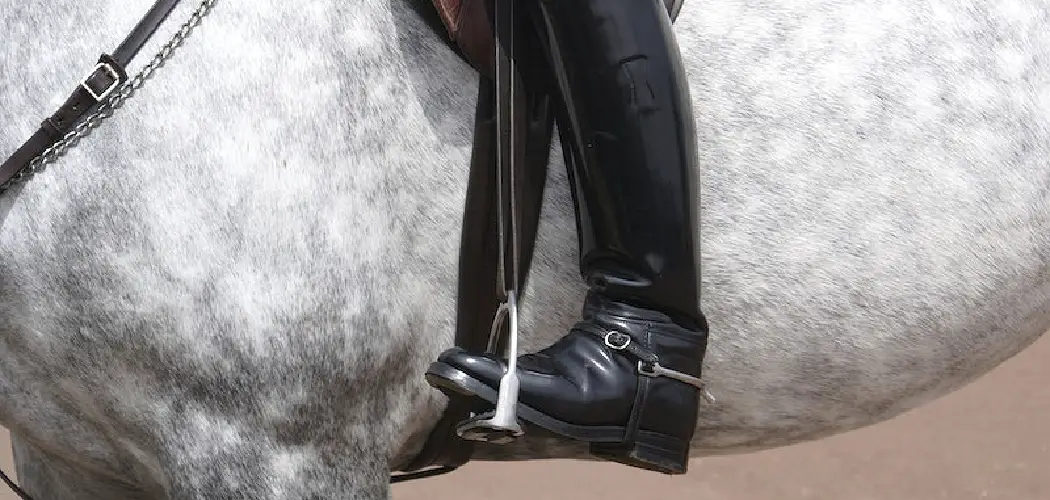Breaking in a new pair of riding boots can be a daunting task. So, we have put together some tips on making the process as easy and painless as possible. With these simple steps, you’ll be able to enjoy your new boots in no time! So keep reading to learn more about how to break in riding boots.
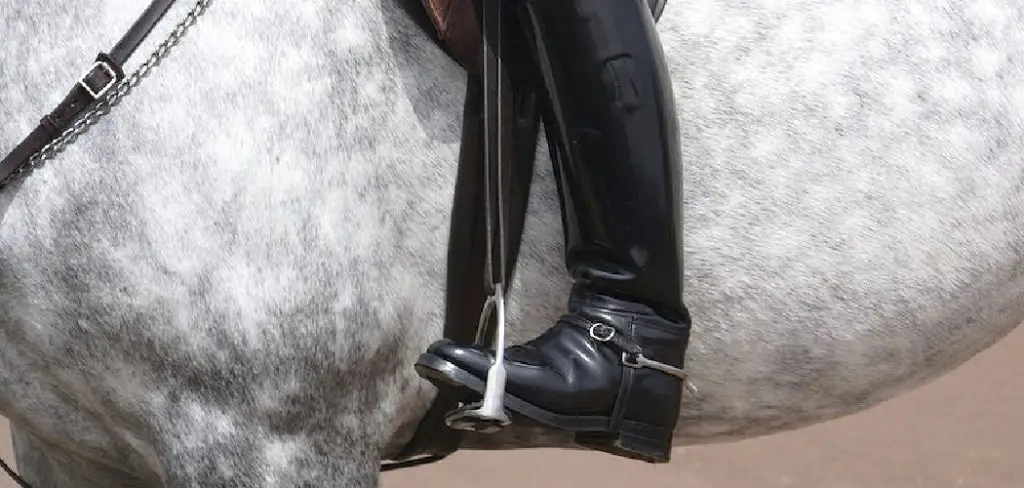
Summary: If you want to break in riding boots, wear them around the house with thick socks for short periods of time at first. Gradually increase the amount of time worn until they feel more comfortable. Avoid getting them wet or exposing them to extreme heat. Use leather conditioner to soften the leather and prevent cracking. Stuff the toe box with newspaper to help reshape the boot.
What Are Riding Boots?
Riding boots are a type of footwear designed for horseback riding. They typically reach up to the knee and are made from a combination of leather and synthetic materials. The boots are designed to provide support and comfort while riding, and they often feature special heel grips that help keep the rider’s foot in place. In addition, riding boots typically have a higher than average calf width to accommodate the rider’s leg position.
While they are commonly used for equestrian activities, riding boots can also be worn for other outdoor activities, such as hiking or walking in mud. So whether you’re an experienced horseback rider or simply enjoy spending time outdoors, investing in a good pair of riding boots is always a wise choice.
Why Should You Break in Riding Boots?
There’s nothing quite like a brand new pair of riding boots. The leather is soft and supple, the fit is perfect, and the style is exactly what you were looking for. However, before you can enjoy all your new boots offer, you need to break them in. This may seem like a tedious task, but it’s actually quite simple. Here are a few reasons why breaking in your riding boots is essential:
First, breaking in your boots helps to ensure a comfortable fit. The leather will mold to your feet over time, creating a custom fit that’s much more comfortable than an off-the-shelf pair of boots. Second, breaking your boots helps prevent blisters and other foot problems. Finally, if you don’t break in your boots properly, you’ll likely experience rubbing and chafing.
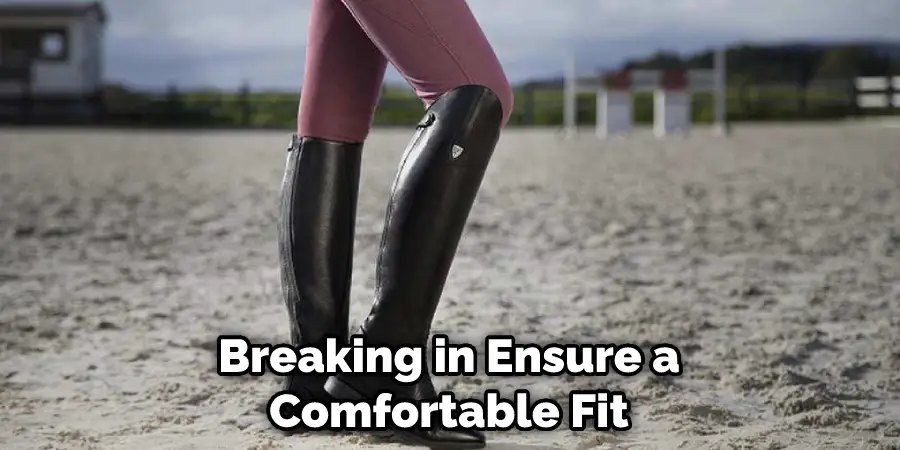
Finally, breaking in your boots helps them last longer. Well-broken-in boots are less likely to suffer from premature wear and tear. So take the time to break in your new riding boots, and you’ll be able to enjoy them for years to come.
7 Steps to Follow on How to Break in Riding Boots
Step 1: Buy the Right Size
It’s important to buy the right size when looking for a new pair of riding boots. Not only will this ensure that they’re comfortable, but it will also help to prevent any potential break-in issues. If your boots are too big, they’ll be more difficult to break in and could end up being very uncomfortable. On the other hand, if they’re too small, you could end up with blisters or other issues.
Step 2: Wear Them Around the House
One of the best ways to start breaking in your new riding boots is simply wearing them around the house. This will help to get them molded to your feet and will also allow you to get used to the feel of them. Just make sure that you’re not wearing them for too long at a time so that you don’t end up with any issues.
Step 3: Use a Boot Stretcher
If you’re having difficulty getting your riding boots to stretch, you may consider using a boot stretcher. This is a tool that you can insert into your boots and then use to stretch them out manually. This is a great option if you’re trying to break in a particularly tight pair of riding boots.
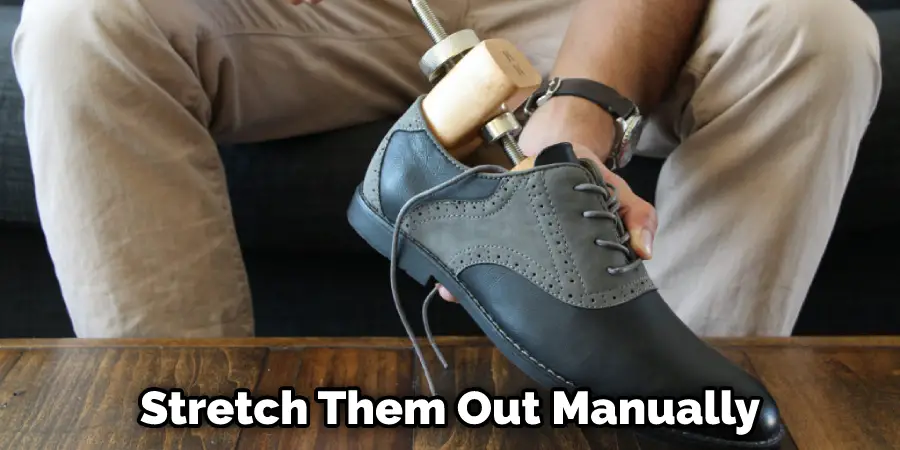
Step 4: Go for a Walk
Another great way to break in your new riding boots is simply to walk in them. This will help to loosen them up and allow you to get used to their feel. Just be sure not to walk too far, or for too long, so you don’t have any issues.
Step 5: Ride a Bike
Riding a bike is another great way to break in your new riding boots. Just make sure to ride slowly at first to get a feel for how the boots feel while riding. Also, be sure to wear socks that are thin enough to fit comfortably inside your boots.
Step 6: Take a Dance Class
If you really want to get your riding boots broken in, you may consider taking a dance class. This is a great way to loosen them up and will allow you to get used to their feel.
Step 7: Go Horseback Riding
Of course, the best way to break in riding boots is actually to go horseback riding. This will help to loosen them up and allow you to get used to their feel. If you don’t have access to a horse, you can try renting one for a day or taking lessons at a local stable.
That’s it! You’ve now learned how to break in riding boots. Just follow these simple steps, and you’ll be sure to have a comfortable and enjoyable experience.
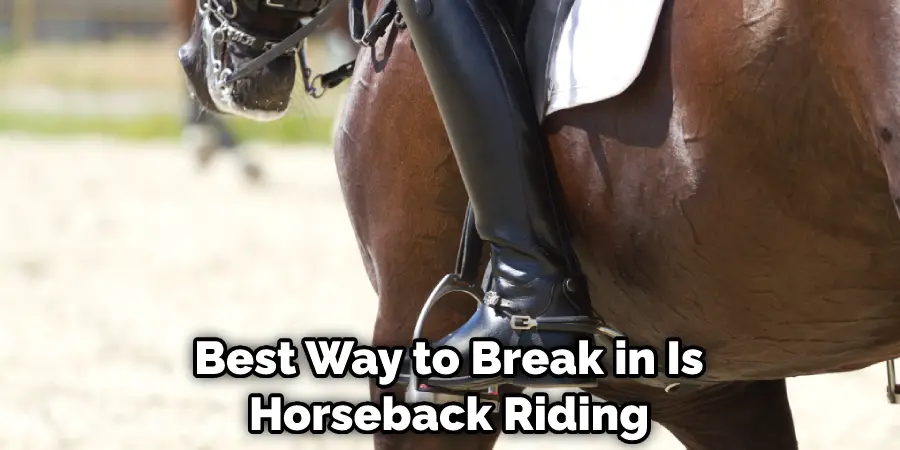
What to Do if Your New Riding Boots Still Give You Blisters
So you finally took the plunge and bought a pair of beautiful leather riding boots. But after just a few wears, you’re already dealing with painful blisters. Don’t despair—there are a few things you can do to break in your new boots without sacrificing your comfort. First, try wearing thin socks or stockings. This will help to reduce friction and prevent your skin from rubbing against the boot’s fabric.
You can also apply a bandage or moleskin over any particularly troublesome areas. If the blisters are particularly large or uncomfortable, you can puncture them with a sterile needle and massage them in some petroleum jelly to speed up the healing process. With a little patience and perseverance, you’ll be able to enjoy your new boots for years to come.
The Top 5 Tips for Breaking into Riding Boots
Anyone who’s ever tried to break in a new pair of riding boots knows it can be frustrating. So here are the top 5 tips for breaking into your new boots so you can enjoy a comfortable ride:
- Avoid wearing your new boots for long periods of time at first. Instead, start with short rides and gradually increase the length of time you’re wearing them.
- Apply a liberal amount of saddle soap to the inside of the boots before putting them on. This will help to soften the leather and make it more pliable.
- Wear thick socks when breaking in your new boots. This will help to prevent blisters and discomfort.
- Use a boot stretcher if you’re having difficulty getting the boots on. Insert the stretcher into the boot and turn the handle until you feel the boot start to give way.
- Be patient! Breaking in new boots takes time, but if you follow these tips, you’ll be off to a comfortable start.
What Not to Do When Trying to Break in Riding Boots
There are a few things you should avoid doing if you want your riding boots to last. First, never put them in the washing machine or dryer. The heat can damage the leather, making it more brittle and more likely to crack. Second, don’t use any harsh chemicals or cleaners on your boots. Instead, stick to gentle, leather-safe products that won’t strip away the natural oils.
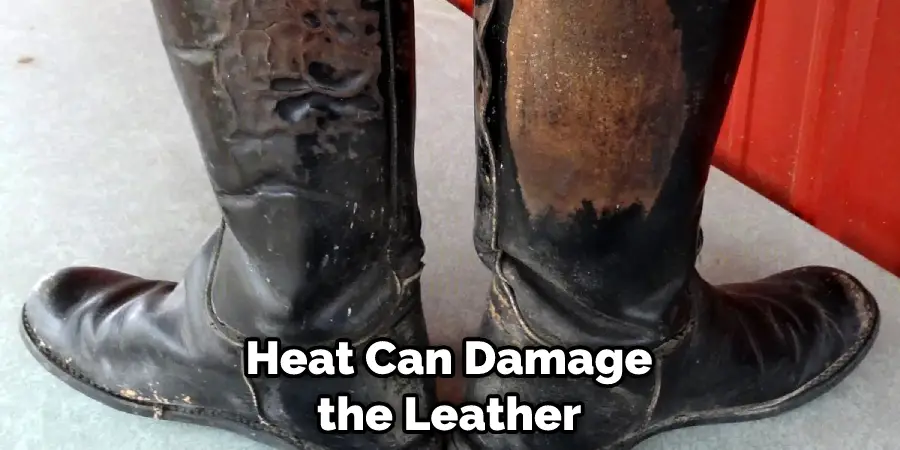
Finally, don’t overload your boots with heavy-duty footwear inserts, a common mistake people make thinking it will make their boots more comfortable. Too much padding can make it difficult to get a proper fit and cause your feet to sweat more, leading to MORE blisters, not less!
So avoid these common pitfalls, and you’ll be well on your way to breaking in your new riding boots in no time. Keep reading for more information about how to break in riding boots.
What Should I Do if My Boots Are Too Tight?
If your boots feel too tight, there are a few things you can do to give yourself some relief. First, wear a thin pair of socks or tights under your boots. This extra layer can help fill up any extra space and provide cushioning. You can also try using a shoehorn or boot stretcher to help loosen up the leather. Finally, if your boots are made of synthetic materials, you can try using a hairdryer to heat up the fabric and make it more pliable.
Just be careful not to overdo it, as you don’t want to melt the material. Finally, if all else fails, you can always take your boots to a professional shoe cobbler and have them stretched out for you. Then, with a little bit of effort, you can make even the tightest boots feel comfortable.
Frequently Asked Questions
Do You Need to Break in Horse Riding Boots?
Breaking in horse riding boots can be a bit of a hassle, but it’s definitely necessary if you want to avoid injury. Here are a few tips to help ease the process:
- Wear them loosely at first – Start by wearing the boots loosely and gradually tighten the laces as you get more used to them. This way, you won’t end up injuring your feet or hurting your horse in the process.
- Walk around – Once you’ve got the boots on, take some time out to walk around and get used to their weight and feel. This will help you determine if they’re too tight or too loose.
- Use a cinch strap – If the boots are still too loose or hurting your feet, use a cinch strap to make them more secure. Make sure to use this sparingly though – overusing it could cause damage to your boots or worse yet, your horse’s feet.
- Wait until they’re broken in – It may take a few weeks or even months for the boots to break in fully, so be patient and don’t force them prematurely. If they still don’t feel comfortable after a few weeks, take them off and try again later on when they’re more broken in.
Are Riding Boots Supposed to Be Tight?
No, riding boots should never be too tight. They should fit comfortably and allow your feet to move freely while you are riding. If they do not fit well, they might cause pain and injuries when you are on your horse. Riding boots can also become stained with manure or dirt, which can make them difficult to clean. In addition, incorrect sizing may lead to a decrease in airflow within the boot, which may increase the risk of foot sweat causing blistering or infection.
Can You Break in Boots Just by Wearing Them?
Unfortunately, no. When you put boots on and try to walk around, they are not going to stretch out or break in like they would if you were walking in them for the first time. This is because the bootfactory put a pressure-molded footbed into each pair of boots, which ensures that your feet remain stationary while the bootgluethrough technology stretches out and forms to your unique contours.
Wearing boots without first breaking them in will result in discomfort from compression wear syndrome (CWS), which can cause blisters and even chronic pain down the leg due to repetitive overuse injuries.
Is It Normal for Boots to Hurt at First?
It is definitely normal for Boots to hurt at first. The shoes may be too tight or not fit well, and it can take some time for them to adjust. If you continously feel pain in the footwear even after adjusting them, then it might be a good idea to bring them in for a warranty inspection. Hats off to those who stick with their boots through the rough patches!
Conclusion
Breaking in your new riding boots doesn’t have to be a chore. With the right products and methods, you can make them feel like they’ve been part of your wardrobe for years. So before you saddle up this season, follow these simple tips to speed up the breaking-in process and get out on the trail faster.
Thanks for reading our post about how to break in riding boots. Have you ever had a pair of shoes or boots that were just too tight? How did you break them in? Share your tips in the comments below!

